Solar Means Business 2024
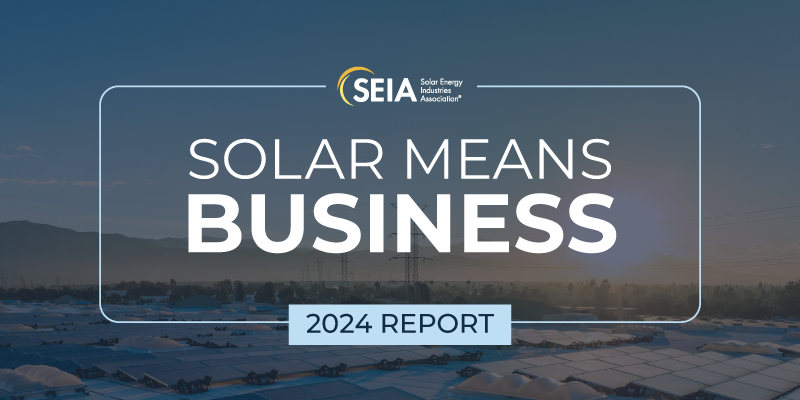
Solar Means Business tracks U.S. solar photovoltaic (PV) installations that support commercial activities at U.S. facilities. The report focuses on America’s largest companies but includes available data for companies of all sizes. Check out the full report for in-depth data and analysis on corporate solar adoption trends in the U.S.
highlights
Introduction
For well over a decade, corporations large and small have been critical to the growth and advancement of the U.S. solar industry.
Currently, corporate procurement represents over 18% of total U.S. solar capacity, and 20% of all installations in 2023 had a corporate offtaker. These businesses are a cornerstone of renewable energy demand in the United States and are driving new deployments, creating new energy demand, and shaping the U.S. energy transition.
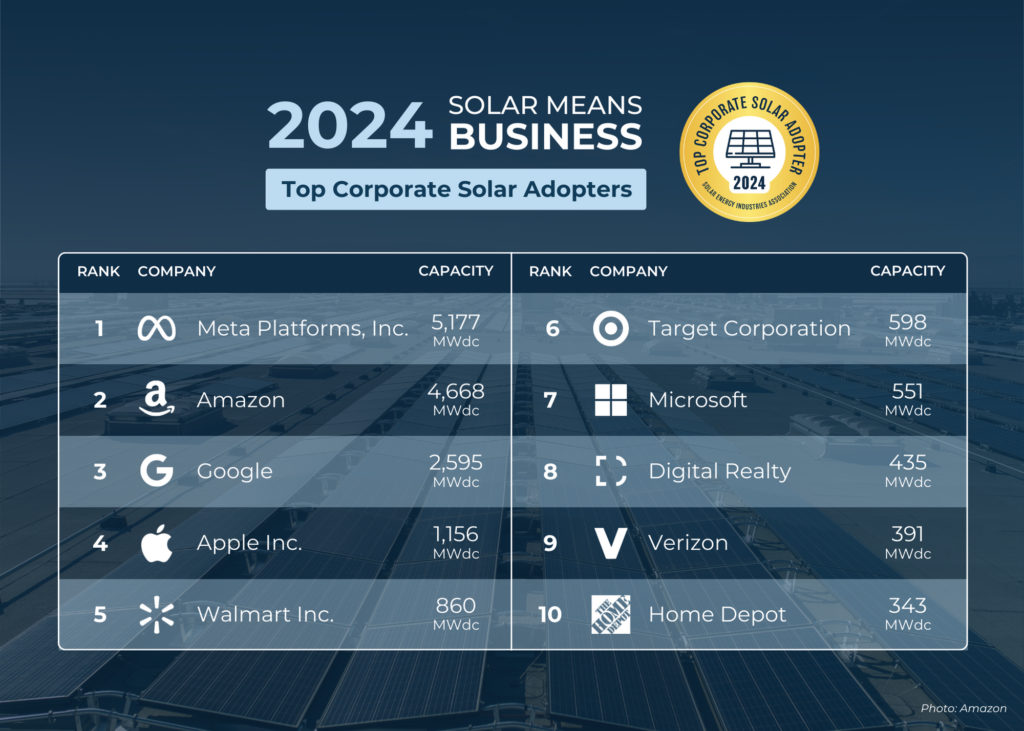
On-Site Solar Capacity
Target has maintained its position as the #1 company for on-site solar with Prologis, Walmart, and Amazon all maintaining their rankings from our previous 2022 report. Blackstone moved up the rankings from #6 to #5, beating out Lineage Logistics by 18 MW. If it were a state, Target would be the 13th largest for on-site solar ahead of Texas and Florida. Overall, the top 10 companies for on-site solar make up 1.36 GW of solar of 6.8% of total us on-site solar capacity.
Across the whole United States, rooftop commercial solar capacity has grown at 12% compound annual growth rate (CAGR) for the past five years. For many companies with large brick-and-mortar locations, on-site solar will continue to be a cornerstone of their energy procurement strategy.
Much of the growth in this space has come from historical leaders in on-site deployment. These companies have a strong understanding of the development process and established relationships with solar industry partners working across a variety of project sites, enabling expansion into new markets.
On-site solar remains a key part of the corporate solar procurement mix, as companies with significant energy demand and aggressive climate goals continue to place on-site solar in their energy procurement strategies.
Enhancements to federal tax credits in 2022 have helped to mitigate some of these headwinds by helping to cover some interconnection costs, incentivizing sourcing domestic hardware, and extra credit for building in areas with a historical dependance on fossil fuel.
Corporates Adopt Energy Storage
Google has emerged at the top with 312 MWac of storage capacity. Google has 25% more battery storage installed than the rest of the top ten combined. The tech giant’s investments in large-scale storage reflect broader market trends as storage becomes an increasingly crucial element of the grid mix but also allows Google to cover more of its power needs on a real-time basis.
The addition of battery storage will be one of the next big waves of renewable energy procurement strategy for corporate buyers. As companies start diversifying into both on-site and off-site solar projects, the next big wave of renewable energy integration will be the addition of on-site and off-site batteries. This allows corporations to better control their energy costs, protect against power outages, facilitate ancillary services, help power EV fleets, and more.
Kaiser Permanente has utilized this well, installing batteries to power microgrids at its medical centers to make them more resilient to power outages. Starbucks has installed battery facilities to help power EV charging stations for its customers to use. As storage, including both standalone systems and systems paired with solar, becomes a larger component of the energy transition, companies can continue to use these investments to provide resilience and meet their specific energy goals.
Corporate Solar Pipelines Break Records
The top ten corporate buyers of solar currently hold a pipeline of 27.8 GWdc of solar. If this full volume comes online, it would total more than the cumulative capacity additions of all solar in the United States that came online in 2022. Amazon alone maintains a pipeline of 13.6 GWdc of solar in development with Meta and Google at 5.9 GWdc and 5.7 GWdc, respectively.
Companies are not only diversifying into both on-site and off-site solar but expanding into battery storage development and exploring novel procurement strategies to manage their energy needs. As corporations continue to innovate in their energy planning through microgrids, participation in ancillary services, or participation as solar tax equity investors, the procurement market will continue to adapt to ensure demand for carbon free power is met.
Commercial load growth and growing sustainability ambitions have grown the pipeline of solar investments, and solar is poised to be a key energy solution for growing businesses well into the future.
View the Full Report
Solar Means Business tracks U.S. solar photovoltaic (PV) installations that support commercial activities at U.S. facilities. The report focuses on America’s largest companies but includes available data for companies of all sizes. Check out the full report for in-depth data and analysis on corporate solar adoption trends in the U.S.
press release
REPORT: Tech, Retail, and Manufacturing Giants Procure Record Levels of Solar and Storage
Companies across the United States are investing in record-levels of solar and energy storage to power their operations.
Read More ->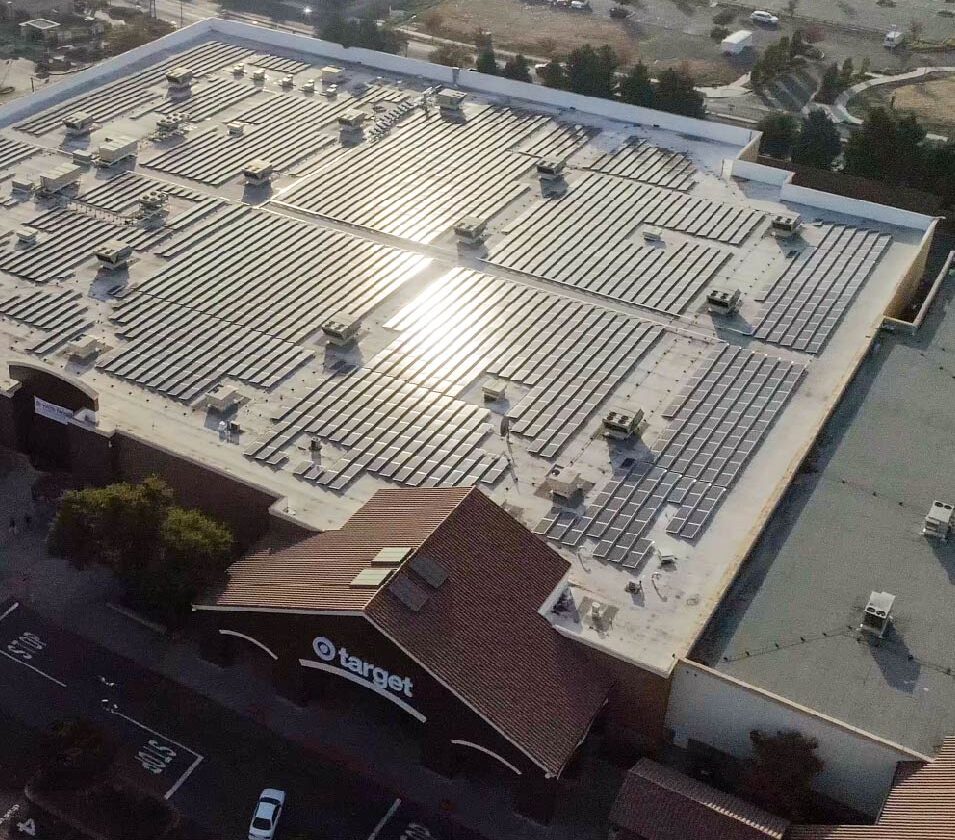
spotlight
Small Businesses Go Solar
Businesses large and small are critical to the growth of the U.S. solar industry. Check out some of the small businesses that are making an impact in their communities with solar and storage.
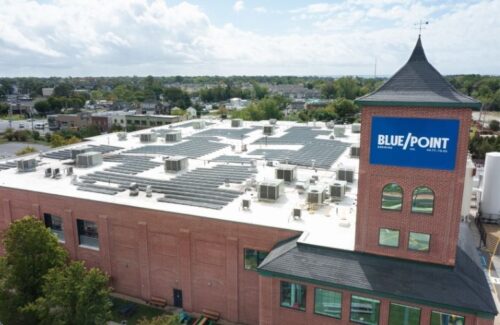
Blue Point Brewing Company | Patchogue, NY
Blue Point is a 100% solar-powered brewery in Long Island, New York. The 217-kilowatt solar array on the roof of the brewery provides for all the building’s electricity needs and saves the company thousands on their energy bills. “Becoming a solar brewery was the logical next step to fight climate change and lower our utility bills at the same time." said Nick Rosenberg, Blue Point’s environmental safety manager.

Mead Orchards | Tivoli, NY
Mead Orchards has always used the power of the sun to grow their business. It’s just the panels that are new. “[Solar] is just another avenue for us. All the compressors and refrigeration we have going to keep that fruit good and fresh? Well, that all takes power. So, it’s sort of a natural step for us to move on to harnessing the sun in new ways.” said manager Joe Nuciforo. Mead Orchards expects to save ~$193,000 over the life of ther solar system.
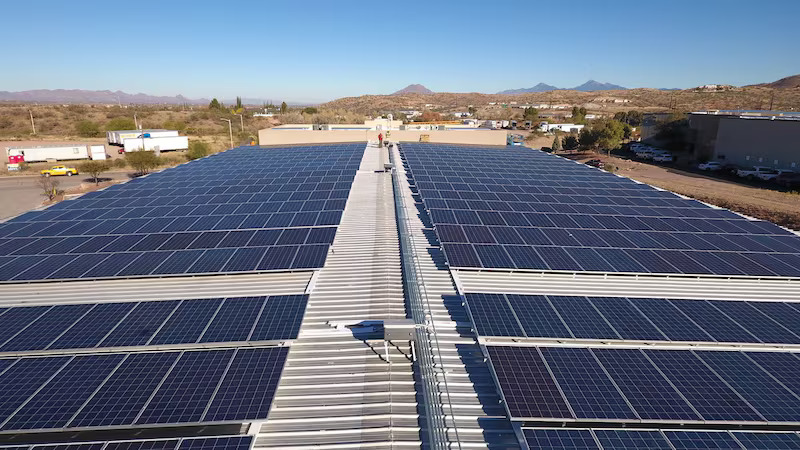
Brooklyn Solar Pizza | Tucson, AZ
Using the hot Arizona sun, Brooklyn Pizza, a local Tucson favorite, cooks every one of their pizzas with 100% solar power. This will provide the restaurant with over 160,000 kWh of electricity and save them nearly $20,000 in utility bills every single year.

Bateman’s Mosida Farms | Elberta, UT
Mosida Farms, run by the Bateman family, has a 600 kW solar array on site. This allows them to power their dairy operation and produce 100 beef claves weekly, while also providing electricity to the local Elberta community. This helps keep the Bateman’s farm self-sufficient while keeping their electricity costs down.

Badia Spices | Sweetwater, FL
Badia Spices, a family-owned Hispanic food company, built Florida’s largest rooftop solar project to power their spice manufacturing facility. The 3,240 kW project will be able to provide the nearly 60-year-old company with 80% of their electricity needs, greatly reducing costs for the manufacturer.
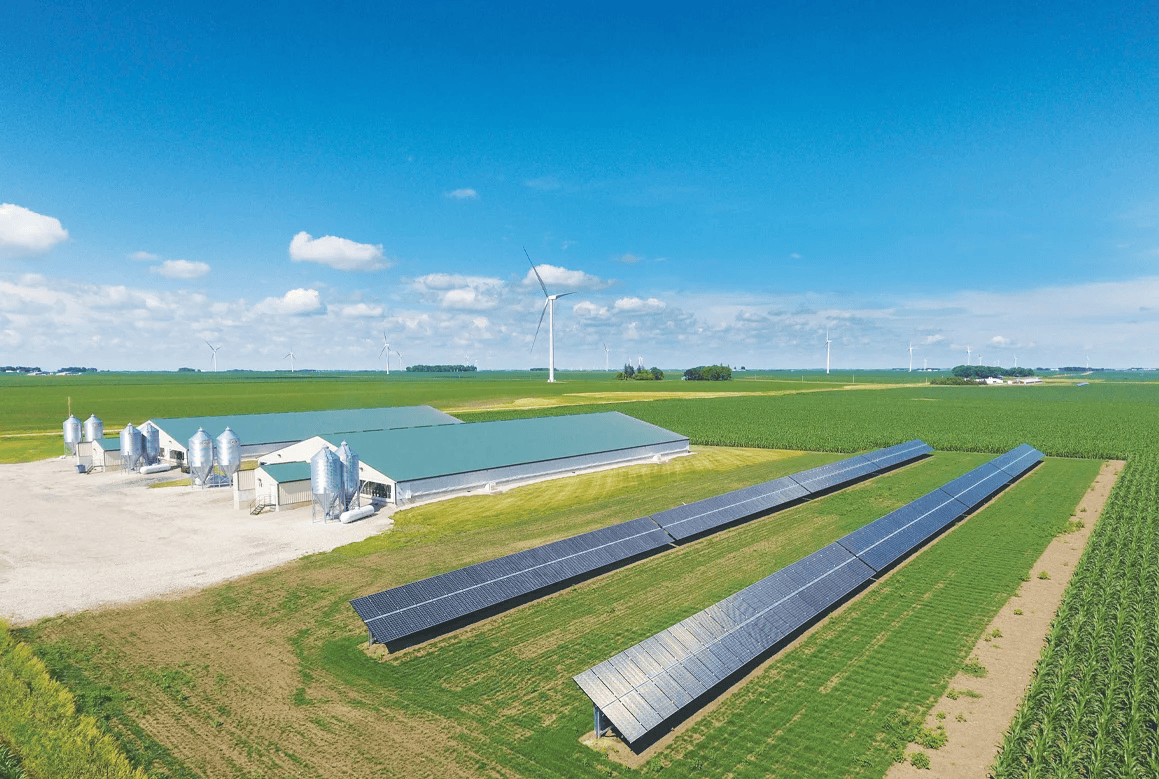
Dorr Hog Farm | Marcus, IA
The Dorr Hog Farm in Marcus, IA sees more than 60,000 hogs pass through the gates of their farm each year — and has the energy bills to match. So, keeping costs down is key. The Dorr family turned to a 595 kW solar project that now supplies 95% of the facility’s energy needs and will save them over $2.3 million during the solar array’s lifespan.

